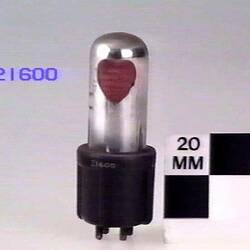Summary
This narraive deals with unlicensed vacuum tube manufacturers in the United States during the 1920s, in particular those manufactures who were selling tubes before the Fleming and DeForest patents expired (1922 & 1924 respectively). There are products of a number of independents who started later in the twenties in the collection but they would not have needed to have been licensed under those patents.
At the beginning of the 1920s decade, the situation with all of the significant radio patents in the United States had been settled with the creation of the Radio Corporation of America (RCA) by the major stakeholders in the industry. The twenties were boom times for many industries and radio was no exception with rapidly changing technology and a public keen to buy the latest in home entertainment.
Vacuum tubes were relatively expensive and, particularly in the early years, did not last very long. This led to the appearance of businesses who would repair tubes for less than the cost of new ones.The equipment needed to do this and the skills acquired in doing so placed these businesses in a position to manufacture tubes 'from scratch' which many of them proceeded to do. Other individuals, having acquired tube-making knowledge from working for the major licensed manufacturers simply set up in business themselves.
Tyne described the situation thus 'in the radio boom of the 1920s, it was inevitable that some unauthorized persons would attempt to cash in on quick profits. Independent manufacturers materialized overnight. Their factories dotted New York, New Jersey, Chicago, and San Francisco. They were called independents because they made tubes without being licensed. Some eventually became licensed; others remained 'bootleggers' (a term which originated with the custom of concealing and transporting contraband, usually liquor, in the leg of a high boot).
Tube bootleggers, always on the run to elude legal authorities, continually changed their company names, location of business, and brand names of tubes-sometimes all three simultaneously. They developed an efficient system of business management for migrants. Ever on the alert for spies, if they suspected a spurious customer, they went into action: they could dismantle their equipment, move to a new spot, reassemble the machinery, notify their employees where to report for work, and be back in tube production under a new name in forty-eight hours. They covered their tracks so well that tracing their wanderings and origins in some cases is impossible. The bootleggers flooded the market with marked and unmarked tubes. RCA spent a fortune pursuing these infringers for prosecution and personal injunctions. This was only partially successful, and the bootleggers' games of hide-and-seek persisted until the de Forest and Fleming patents expired. The voluminous court records of litigation pertaining to this activity suggest that the radio industry generated as many jobs for the legal profession as for the electronics business.'
Tyne lists about 280 tube manufacturers who were active between 1920 and 1930. His list is based on advertisements from the period. There were many more smaller manufacturers who dealt directly with dealers and set manufacturers who did not advertise. Of the manufacturers listed, only eight were licensed by RCA. Most of the unlicensed manufacturers had vanished by the early thirties. Similar activities did not take place on the other side of the Atlantic where tube manufacture was largely confined to large well-established organisations already involved in electric lamp or other forms of electrical manufacturing. The gung-ho wild-west nature of the early tube industry was a very American phenomenon.
A small local connection with this era was the use of 'Vox' tubes by Eclipse Radio of Flinders Lane Melbourne. In their catalogue from around 1929 they made a point of advertising the fact that their sets were fitted with 'Vox' tubes. 'Vox' tubes were made by one of the many unlicensed independents, the Munder Electrical Co. of Springfield Massachusetts.
References
Gerald F. J. Tyne, "Saga of the Vacuum Tube" (Indianapolis USA, Howard W. Sams, 1987). ISBN: 0 672-21470-9
More Information
-
Keywords
-
Authors
-
Article types





